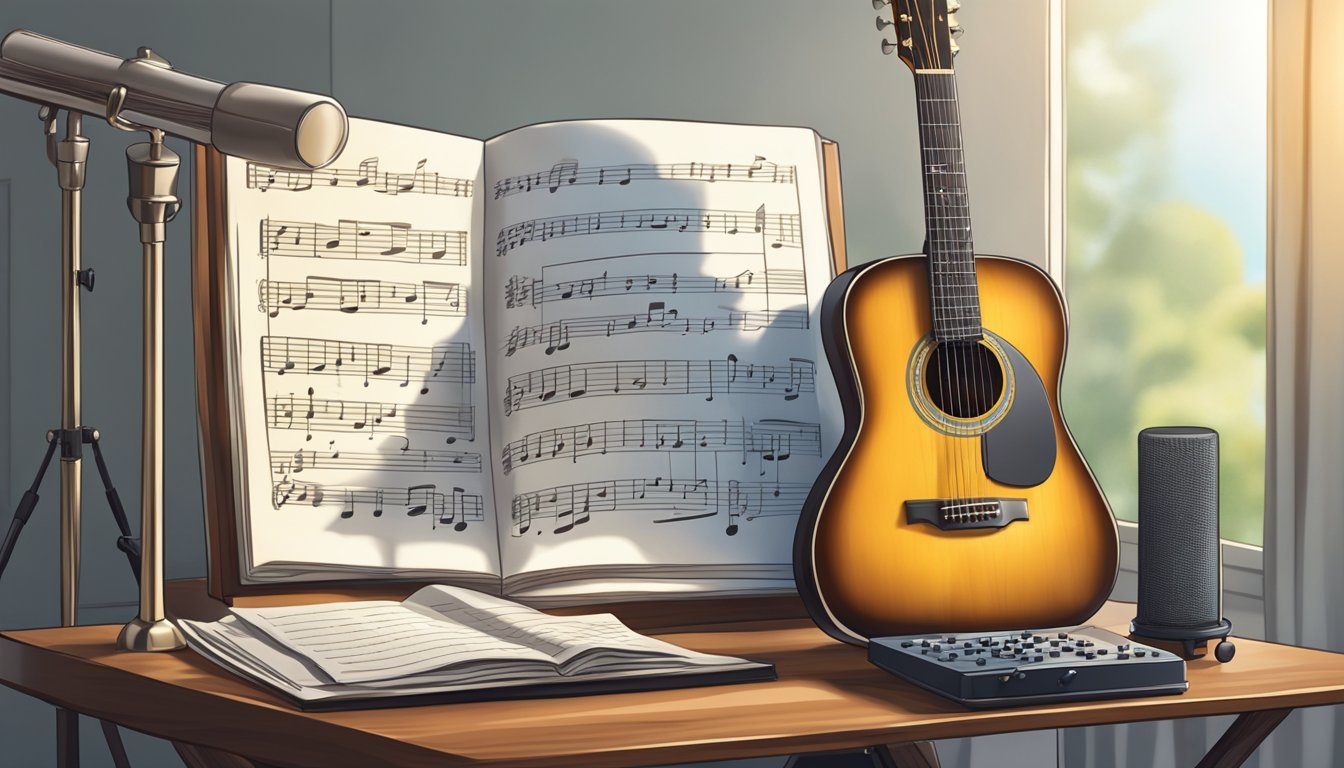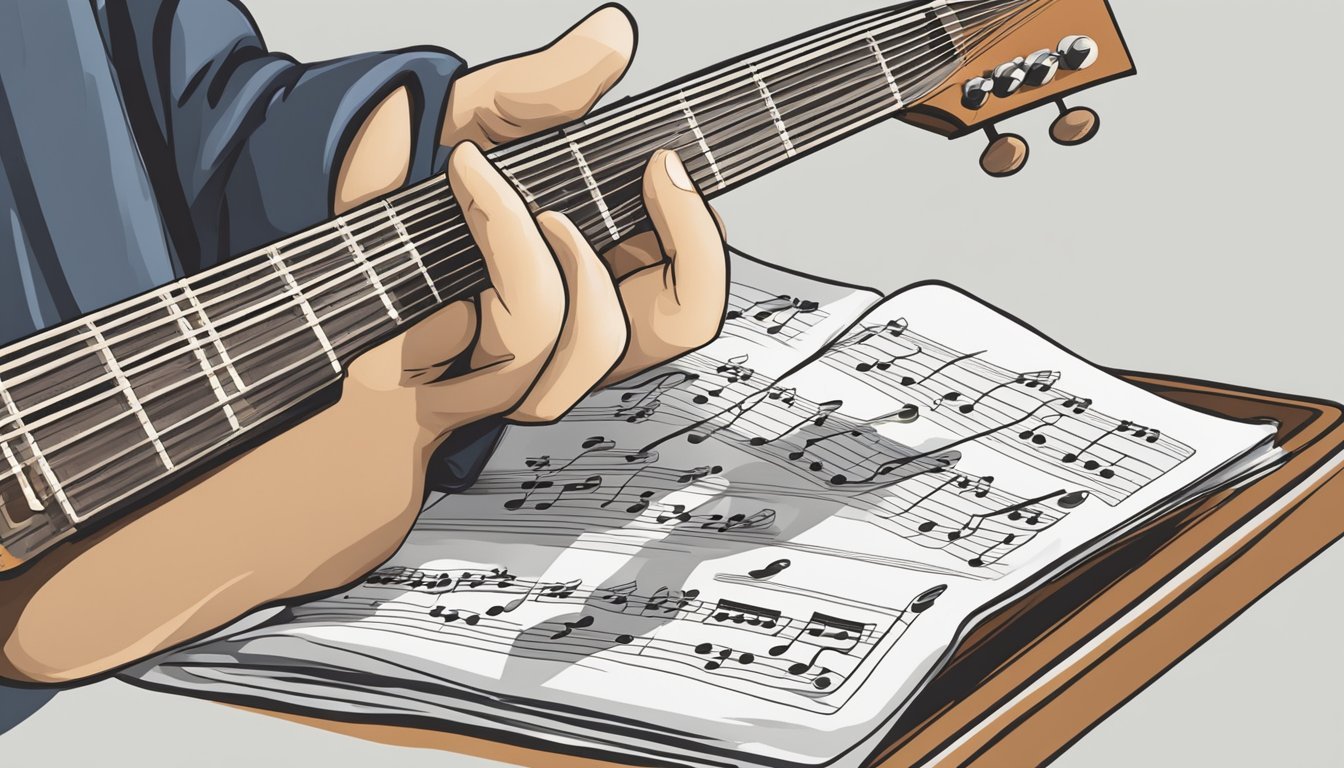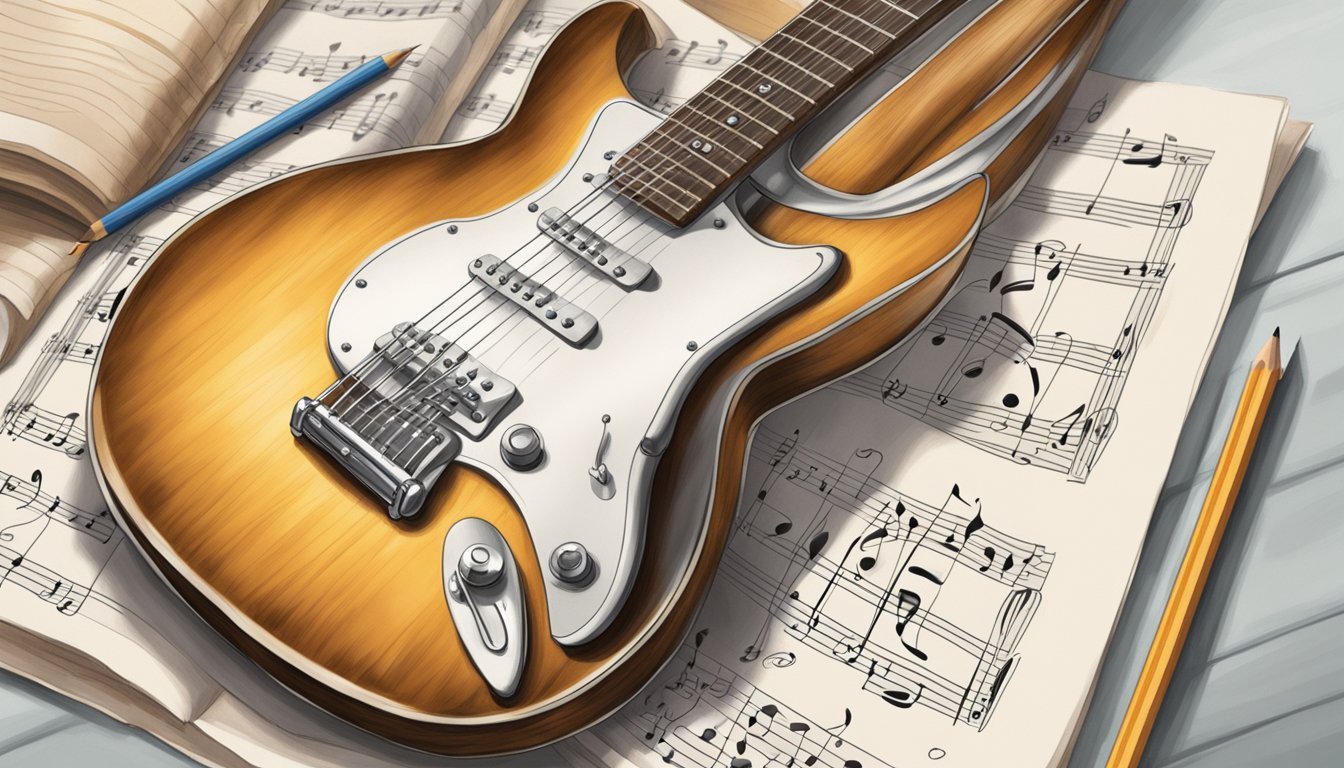Learning to read sheet music for guitar can seem tricky at first, but it’s a valuable skill that opens up a world of music. With some basic knowledge of standard notation, guitar tablature, and rhythm fundamentals, you can start playing your favorite songs in no time.
Whether you’re a beginner or looking to improve your skills, understanding how to decipher guitar sheet music is essential for your musical journey.

You’ll discover that guitar sheet music is written on a staff, which helps you identify the notes you need to play.
Knowing how to read tabs, which represent the strings and frets visually, makes it even easier to start playing.
As you get comfortable with timing and rhythm, your ability to interpret music will grow, allowing you to express yourself more freely on the guitar.
Once you grasp these basics, you’ll see how music theory enhances your playing.
This knowledge not only boosts your confidence but also helps you explore new songs and techniques.
So, if you’re ready to dive in, let’s unlock the secrets of reading guitar sheet music together.
Key Takeaways
- Understanding standard notation and tablature is key to playing the guitar.
- Basic timing and rhythm skills are essential for accurate music performance.
- Music theory connects your playing to a broader musical context.
Deciphering The Basics of Guitar Sheet Music
Reading guitar sheet music is easier than it looks.
It’s all about recognizing how music is organized on the staff and understanding the notes you’ll play.
Understanding the Staff and Clefs
The staff is made up of five lines and four spaces.
Each line and space represents a different note.
For guitar, you mainly use the treble clef.
This clef looks like a fancy swirl and tells you where to place notes.
In the treble clef, the lines from bottom to top are E, G, B, D, and F. A common memory trick is “Every Good Boy Deserves Food.” The spaces spell out F, A, C, E, which is simple to remember.
You might see bass clef in music, too.
It’s used for lower notes, but guitarists usually stick with the treble clef.
Knowing these clefs helps you quickly identify the notes you’ll be playing.
Navigating Through Notes and Pitch
Now let’s look at notes and pitch.
The notes represent different sounds or pitches.
On the staff, notes may sit on the lines or in the spaces.
For guitar, the G note is important.
It sits on the second line from the bottom.
The highest notes often use ledger lines, which are small lines that extend the staff for notes above or below.
Practice recognizing notes on the staff, as you’ll need this to play.
Start with basic notes like E, G, and A. Make flashcards or draw them out to remember their positions.
The more you practice, the easier it gets to read music and play your favorite songs.
Timing and Rhythm Fundamentals

Understanding timing and rhythm is essential for playing guitar.
This includes recognizing how music is divided into beats and how different note values create a rhythm.
You’ll also learn about time signatures, which help you understand the structure of a piece.
The Role of Time Signatures
Time signatures tell you how many beats are in each measure and which note gets the beat.
They look like a fraction at the beginning of a piece of music.
Common time signatures include:
- 4/4: Four beats per measure, where the quarter note gets the beat.
- 3/4: Three beats per measure, often used in waltzes.
- 6/8: Six beats per measure, with a fast, rolling feel.
Knowing the time signature helps you count rhythms accurately.
This is where a metronome can come in handy.
A metronome gives you a steady beat, helping you practice at different speeds, like beats per minute (BPM).
Note Values and Symbols
Note values tell you how long to hold a note.
Here’s a quick rundown of the basics:
- Whole note: 4 beats. It has a hollow note head with no stem.
- Half note: 2 beats. It has a hollow note head and a stem.
- Quarter note: 1 beat. It has a solid note head and a stem.
- Eighth notes: 1/2 beat. These usually come in pairs and have flags.
- 16th notes: 1/4 beat. These have two flags and are played quickly.
Rests are also important.
They indicate silence in music, just like notes indicate sound.
For example, a quarter rest lasts 1 beat.
By knowing these note durations and symbols, you can read and play rhythms accurately.
Navigation and Interpretation of Guitar Tabs

Understanding guitar tabs makes learning songs easy and fun.
You’ll find that navigating between chord diagrams and other notations helps you play better and adds expression to your music.
From Staff Notation to Guitar Tablature
Standard guitar notation shows music on a staff, which may seem complex.
Guitar tablature (tabs) simplifies this by using six horizontal lines that represent your guitar strings.
The bottom line is the thickest string (low E), and the top is the thinnest (high E).
Numbers on these lines tell you which fret to press.
For example, a “0” means you play the string open, and a “3” means you press down on the third fret.
Chord shapes can also be represented in tabs, allowing you to see how to form guitar chords easily.
Techniques and Expression Markings
When reading tabs, you’ll see different techniques marked, like hammer-ons, pull-offs, and slurs.
A hammer-on is shown with a slur line connecting two notes, meaning you hit the first note and “hammer” into the second.
Pull-offs look similar but show the opposite motion, pulling your finger off to sound the previous note.
Ties indicate you hold a note longer without playing it again, extending its duration.
These markings help add expression to the music and let you convey feelings better.
Using tabs lets you capture these techniques effectively in your playing.
Applying Music Theory to Guitar Playing
Music theory can make your guitar playing much clearer.
Understanding the basics helps you read guitar sheet music more easily.
Let’s break down two important areas: key signatures and scales, along with chord charts and finger positions.
Key Signatures and Scales
Key signatures tell you which notes are sharp or flat in a piece of music.
For example, the C major scale has no sharps or flats, while the A major scale has three sharps.
You can find key signatures at the beginning of the sheet music.
When reading guitar music, remember the notes on the staff.
You can use the phrase “Every Good Boy Deserves Football” for the lines and “FACE” for the spaces so you don’t forget them.
Knowing the scale helps you select the right notes for solos or melodies.
Advancing With Chord Charts and Finger Positions
Chord charts are essential for learning songs quickly.
They show you which chords to play and where to put your fingers.
Look for finger indications that guide you on which fret to play.
When playing, pay attention to measures and bars in the music.
This helps keep your timing consistent.
Use repeat signs to know when to go back and play a section again.
Practice various chords to build your skills.
Each chord you learn opens up more songs you can play, making practice more enjoyable.
Frequently Asked Questions
When you’re starting to learn how to read sheet music for guitar, you might have a lot of questions.
Here are some common ones that can help you get a better grip on reading music.
What’s the easiest way to start reading sheet music for guitar if you’re a beginner?
A good starting point is to familiarize yourself with the treble clef and the musical notes.
Look at simple guitar music and identify the notes on the staff.
Practicing regularly, even for a short time each day, can make a big difference in your understanding.
As you progress, try to learn how to play guitar notes by associating each note on the staff with its corresponding position on the fretboard.
Using online resources, tutorials, or a teacher can help reinforce your learning and improve your technique.
With patience and consistent practice, you’ll gradually develop confidence in reading and playing music with ease.
Can you learn to read guitar music online for free?
Yes, you can find many free resources online.
Websites offer tutorials, sheet music, and guides that help you learn to read music.
Check out various platforms to find the style that suits you best.
What are the basics of reading guitar tabs?
Guitar tabs are a straightforward way to read music, especially for beginners.
They show you where to place your fingers on the fretboard.
Each number indicates a fret on a string, so you just follow the numbers to play your notes.
What’s the difference between reading sheet music and tabs for guitar?
Sheet music shows both notes and rhythm, while tabs focus mostly on where to play on the guitar.
Sheet music can be more complex but offers a complete picture of the music.
Tabs are simpler and often easier to read for beginners.
How do you read chords on guitar sheet music?
Chords are usually represented as stacked notes on the staff.
Each note corresponds to a string and fret combination.
You can see which notes to play together, allowing you to strum the full chord.
Are there any tricks to quickly learn sheet music notes for guitar?
Mnemonics can help with memorization.
For example, you can remember “Every Good Boy Does Fine” for the lines of the treble clef.
Regular practice and playing along with songs can also speed up recognition of notes.

